Mastering Skate Edits: Techniques and Tips
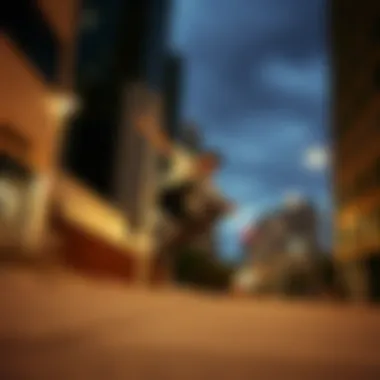

Intro
Creating skate edits is more than just pointing a camera and hitting record. It’s an art form, a way to capture and convey the unique energy of skateboarding. As anyone who has ever tried to piece together video footage knows, it involves a myriad of steps. From choosing the right gear to understanding editing software, each detail counts. The goal? To produce visually striking content that resonates with both the skaters and the audience.
In this guide, we’ll dive deep into the essentials of crafting compelling skate edits. We'll begin by discussing the foundational gear that can make or break your video project. Then we'll jump into skateboarding tricks and tutorials that can elevate your footage. After all, it’s the tricks that often steal the show. With a good blend of planning, creativity, and technical savvy, your skate edits will not only showcase the skill but also tell a story that draws viewers in.
Essential Skateboarding Gear
When it comes to making high-quality skate edits, having the right gear is crucial. Not just any skateboard, but those that can withstand the rigors of filming and performing tricks.
Top Picks for Skateboards and Accessories
Investing in quality gear is paramount. Here are some essentials which can enhance your skate filming experience:
- Skateboard: A solid deck, like the Element Skateboards section, provides durability.
- Camera: A wide-angle lens camera like a GoPro HERO10 allows you to capture seamless action shots.
- Tripod: It helps stabilize shots and prevents shaky footage.
- Editing Software: Software such as Adobe Premiere Pro or Final Cut Pro can elevate your edits.
- Sound Equipment: A portable microphone can vastly improve audio quality, adding depth to your edits.
Maintenance Tips for Longevity
Don’t overlook the importance of maintaining your gear. A little care goes a long way:
- Regularly check skateboard trucks and tighten them if necessary.
- Wipe down your camera lens with a microfibre cloth to avoid blurred images.
- Clean the editing software by removing unused files to keep everything running smoothly.
Properly maintained equipment not only lasts longer but also performs better, which can significantly affect the quality of your skate edits.
Skateboarding Tricks and Tutorials
Understanding which tricks to feature in your edits can greatly enhance their visual appeal. Highlighting both beginner and advanced tricks will cater to a wider audience.
Beginner Tricks to Get You Started
For those new to the skateboarding world, starting with foundational tricks can make a world of difference:
- Ollie: The basic trick that forms the backbone of many others.
- Kickflip: Adds flair and style to your videos.
- 50-50 Grind: A go-to trick for beginners looking to transition to rail tricks.
Creating tutorials on these moves can also attract skaters looking to improve their skills, thereby widening your audience.
Advanced Techniques for Seasoned Skaters
For seasoned pros wanting to push the envelope, here are some crowd-pleasers:
- Heelflip: A twist on the kickflip, it can turn heads.
- Noseblunt Slide: Complex but rewarding, this trick showcases advanced skill.
- Board Slide: Perfect for urban environments and adds multiple angles to your edits.
Including a mix of trick types not only showcases skill but also keeps your video engaging from start to finish.
"The beauty of skate edits lies in their unpredictability; one minute it’s a chill vibe, next it’s fast and furious. You never quite know what to expect until the wheels hit the ground."
With the right foundation, your path to crafting incredible skate edits can be as smooth as a well-oiled skateboard wheel. Understanding gear and mastering tricks will empower you to produce videos that not only captivate but resonate with the skateboarding community.
For further insights, consider visiting resources such as Wikipedia, Britannica, and forums where skaters share and connect like Reddit. Stay tuned as we continue to unravel more nuances of skate edits in the coming sections.
Prelims to Skate Edits
Creating or watching skate edits can evoke a strong sense of community amongst skaters. The very act of putting a skateboard in motion is deeply intertwined with creativity; it's not just about stunts but storytelling. In this article, we will explore the fundamental concepts needed for crafting compelling skate edits, serving both enthusiasts and aspiring videographers.
Understanding Skate Edits
Skate edits can be viewed as a vibrant reflection of a skater's mindset, style, and the environment in which they skate. These videos are not merely a sequence of tricks strung together, but rather an art form. They capture the ephemeral essence of skate culture, blending motion with emotion. Imagine a raw clip showcasing a kickflip over a city bench. Now think about how adding a thoughtful soundtrack and some creative angles can transform that moment into a cinematic experience. Hence, it's essential to recognize that skate edits are about more than just skating; they're about weaving a narrative that resonates with viewers.
The digital age has allowed countless skaters to showcase their journeys, sharing styles that range from the budget-friendly to the high-end aesthetic. And guess what? The goal isn't perfection but rather authenticity. A skate edit should reflect the individuality of the skater while invoking feelings of nostalgia for viewers. From the aesthetic choices made in post-production to the choice of tricks highlighted, all these elements contribute to the unique nature of each skate edit.
The Importance of Personal Style
One aspect to keep in mind while creating skate edits is the role personal style has in shaping content. Personal style goes beyond trick selection and includes how one visually presents their skateboarding. Think of it like a fingerprint; no two skaters are alike. A unique flair can elevate the impact of your edit, leaving a lasting impression on viewers.
By embracing a signature style, you foster a deeper connection with your audience. When viewers can identify your style, they will likely seek out your work, eager for more. This could be as simple as the way you film. Some may prefer sleek, high-definition shots, while others might toss in grainy footage reminiscent of old skate videos. Each choice sends a message, and those choices can signify not just who you are but where you come from.
In essence, personal style drives the narrative of a skate edit. It’s not merely about skating tricks; it’s about showcasing the heart and soul of skate culture. Whether your style leans towards the avant-garde or skirts tradition, the key is staying true to yourself. A genuine representation of your skating identity will resonate with the audience and make your skate edits memorable.
Personal style in skate edits isn’t a trend; it’s a signature that lasts.
By being authentic, you not only tell your story but invite others to find their stories in the imagery you create. So as we dive deeper into this guide, remember: your unique lens on the world is your strongest asset.
Conceptualizing Your Edit
Before diving into the nitty-gritty of filming and editing, the concept behind your skate edit is vital. It serves as the backbone of your project, setting the tone and direction for everything that follows. A well-conceived edit not only enhances engagement but creates a narrative that resonates with viewers. It's all about stitching together a consistent story through visuals that reflect not just the act of skateboarding but the very culture behind it.
In conceptualizing your edit, there are several elements to consider. First, understanding the emotional tone you want to convey is crucial. Are you aiming for something lighthearted and playful or more serious and gritty? Each choice informs your shooting style, your choice of music, and even your editing pace.
Additionally, the clarity of your theme helps in making creative decisions—everything from location shoots to the choice of tricks. When you know your aim, it sets a clear path for what to film and how to approach editing. Having this foundational idea will reduce the chance of struggling with direction when you finally sit down in front of your editing software.
Choosing a Theme or Narrative
Picking a theme provides a framework around which you can build your entire edit. Consider your inspiration—whether it’s the local skate scene, a particular skate park, or a cultural movement—having an anchor helps make the project cohesive. For example, if you were to make a tribute to urban street skating, your shots should include cityscapes, retro graffiti, and candid moments that represent life around the streets.
A well-rounded narrative can also elevate your edit. Perhaps you want to focus on your journey from beginner to seasoned skater, highlighting the learning curve, the struggles, and the triumphs along the way. Framing your edit in this way resonates deeply with many viewers who’ve experienced similar journeys.
Gathering Inspiration
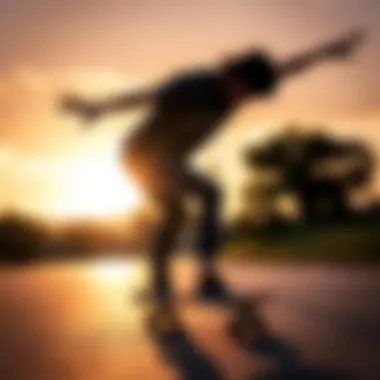

Inspiration is all around, but you must know where to look. Gathering ideas for your project helps spark creativity and new techniques you might want to incorporate. It acts as a springboard for your editing style and can assist in developing your unique visual identity. Here’s how to go about it:
Exploring Iconic Skate Videos
Iconic skate videos are a treasure trove of inspiration. We all have our favorites—the ones that sparked our interest in skating or those that left a deep impression. When you watch these videos, pay careful attention to the cinematic techniques employed. This includes everything from shot composition to how transitions are handled. For instance, many classic skate edits use slow-motion to amplify the impact of tricks, a technique that can influence your own editing choices.
One of the key characteristics of these videos is their ability to blend narrative with raw action. They often introduce a story element that gives context to the skating, making the viewer feel connected.
However, it’s essential to avoid simply mimicking styles from these videos without a personal twist. While they serve as excellent reference points, your edit should reflect your voice and style to make it stand out.
Analyzing Filmmaking Techniques
Once you’ve absorbed inspiration from existing videos, it is wise to analyze the filmmaking techniques that make them compelling. Focus on how filmmakers achieve particular moods or feelings. For instance, consider camera angles—are they primarily low angle for a dramatic view of the skater, or do they utilize aerial shots to show the environment? Each choice contributes to the storytelling.
This analysis not only gives you insights into great practices but also exposes you to what not to do. There can be pitfalls like overusing special effects or employing distracting transitions.
In looking at various techniques, you’ll uncover what best fits your narrative, aiding you in crafting an edit that balances creativity with storytelling authenticity.
By deciding on a strong theme and analyzing the techniques used by others, you're setting a solid foundation for your skate edit. So, grab your skateboard and start visualizing your story before the lens finds its focus.
Planning Your Shoot
Planning your shoot is a crucial step in crafting compelling skate edits. Without a proper plan, you risk wasting time, missing out on golden moments, and ending up with less-than-average footage. Good planning lays the groundwork for a smooth filming process, ensuring you capture not only the best tricks but also the essence of your skateboarding story.
Selecting Locations
Choosing the right location can make or break your skate edit. Factors like smooth surfaces, interesting backdrops, and adequate lighting all contribute to the quality of your footage.
Identifying Popular Spots
Focusing on popular spots can be beneficial for various reasons. These locations are often well-known within the skating community, ensuring that your edit resonates with viewers who are familiar with these iconic places. Think about the breathtaking ledges at Pier 7 in San Francisco or the renowned Wallenberg in Oakland.
The key characteristic of popular spots is their accessibility and visual appeal. Every skater knows that landing a trick in a well-loved spot not only gives a sense of accomplishment but also connects your edit to a larger narrative within the skate culture. However, capturing footage in these crowded areas can present challenges with distractions and possibly other skaters.
This can lead to some unique footage, as you might catch unexpected interactions or an impromptu session with fellow skaters. Still, you'll need to weigh these factors when choosing popular spots. Sometimes, you might have to be patient or come back at off-peak times for smoother filming.
Discovering Hidden Gems
On the flip side, discovering hidden gems opens up a treasure trove of opportunities for creativity in your edits. These lesser-known locations often have unique architecture, graffiti art, or natural scenery that can add a fresh perspective to your skate edit. Beyond that, shooting in these spots also allows for flexibility since you won't have throngs of spectators.
A hidden gem could be an abandoned warehouse, a transport site, or a small local park that few skaters know about. These locations can provide the perfect canvas for your storytelling and enable you to achieve that elusive vibe that sets your edit apart from the pack. However, scouting these locations can take time and might involve a bit of legwork to find them.
Creating a Shot List
After identifying your locations, the next step is creating a shot list. This list will help you to zero in on specific angles, tricks, and moments that you don't want to miss. Having a plan makes filming far more efficient and organized; it ensures that you capture all the essential elements that contribute to your skate edit's narrative. It’s like having a roadmap for your shoot, guiding you through each spot while allowing for some spontaneity. A clear shot list also lets you allocate enough time for each trick without feeling rushed.
In summary, planning your shoot serves as the backbone of your skating footage creation process. By selecting the right locations, either popular or hidden, and creating a comprehensive shot list, you lay the groundwork for a successful filming experience. Your carefully planned approach will translate into a compelling narrative in your final edit.
Filming Techniques
When it comes to crafting stunning skate edits, filming techniques play a pivotal role. It’s not merely about capturing tricks but telling a story and evoking emotions through the lens. This section dives into essential filming aspects, guiding both newbies and seasoned videographers in setting the right tone and capturing skaters in their natural element.
Choosing the Right Equipment
Cameras
The choice of camera can make or break your skate edit. A camera with high resolution and good low-light performance, like the Sony A7 III, allows for vibrant colors and detailed footage, even during those twilight sessions at the skatepark. Its rapid autofocus and continuous shooting modes make it a prized possession for videographers who don’t want to miss a moment.
However, it's essential to consider that while more advanced cameras come with perks, they also require a certain level of expertise. Beginners might find themselves overwhelmed by complex setups. Not to mention, the cost can punch a hole in your pocket,
so finding a balance is vital.
Lenses
Lenses are the unsung heroes of filming. A versatile lens, such as a 24-70mm f/2.8, allows for a range of perspectives. It’s perfect for everything from wide-angle shots of the whole skate scene to close-ups that reveal every flip and rotate of the board. A key characteristic of a good lens is its aperture. A wider aperture lets in more light, resulting in sharper images and smoother backgrounds, adding a professional touch. Yet, be mindful; lenses can be a bit finicky depending on your environment. Carrying multiple lenses may lead to more dynamic footage, but swapping them on the fly can slow down the action and lead to missed tricks.
Stabilization Tools
In the world of skate videography, shaky footage is not the vibe you want to convey. Stabilization tools, such as gimbals or handheld stabilizers, are worth their weight in gold. They help to create smooth, fluid movements that keep your skate edits looking professional. Notably, tools like the Zhiyun Crane 2 offer balance and control without the cumbersome nature of heavier rigs. However, every tool has its limitations; using stabilization equipment can sometimes add bulk to your setup, making it harder to maneuver in tight spaces.
Shooting Techniques
Angles and Perspectives
Angles can turn an ordinary skate trick into breathtaking footage. Shooting from a low angle can exaggerate the height of a trick, making it look more spectacular. A bird’s-eye view provides context to the surroundings, while side angles can capture the grinds and slides beautifully. The beauty of these perspectives is that they emphasize the artistry and skill of skating. However, one must be mindful not to get caught up in trying to be overly creative; sometimes, keeping it simple can deliver the most powerful impact.
Dynamic Movement
Capturing the essence of skateboarding is not just about static shots. Employing dynamic movement in your shooting technique, such as panning alongside the skater, adds excitement and rhythm to your footage. When executed correctly, this technique immerses the viewer in the energy of the ride. But here’s the catch: pacing is key. If you move too fast, you lose the connection to the skater; too slow, and you might miss the moment entirely. Striking a balance is crucial in achieving that exhilarating feel.
Lighting Considerations
Lighting transforms your footage from flat to fantastic. Natural light tends to flatter the colors of your skateboard, enhancing everything from the grip tape to the wheels. Early morning or late afternoons are ideal times for shooting, as the sun casts a warm glow that makes the skaters stand out. On the flip side, harsh overhead lights can create unflattering shadows that detract from the performance. Carrying portable reflectors can help mitigate unwanted shadows when you find yourself in less-than-perfect lighting conditions.
Remember: Great footage is both seen and felt. By mastering filming techniques, you are laying down the groundwork for creating engaging skate edits that resonate with the audience.
Editing Your Skate Edit
The process of editing your skate video is pivotal in crafting the final piece that resonates with viewers. This phase is where all the planning and filming culminate into a polished visual narrative. It’s not just about arranging clips; it’s about weaving together a story that captures the essence of skateboarding and the vibe of skate culture. Editing can either make or break your project, and so understanding the nuances of various editing techniques and tools is essential.
Diving into the right software options and mastering essential editing techniques can lead to a more compelling and engaging edit, increasing the chance your video will stand out in a sea of content. A well-edited skate edit is not only visually appealing but also serves to highlight the unique style and creativity of both the skater and the videographer.
Software Options
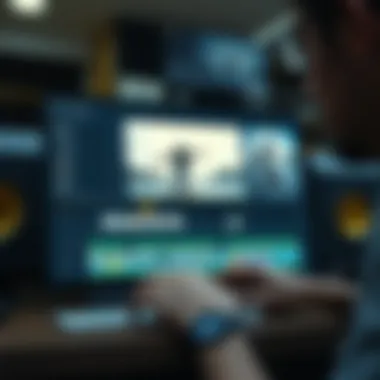
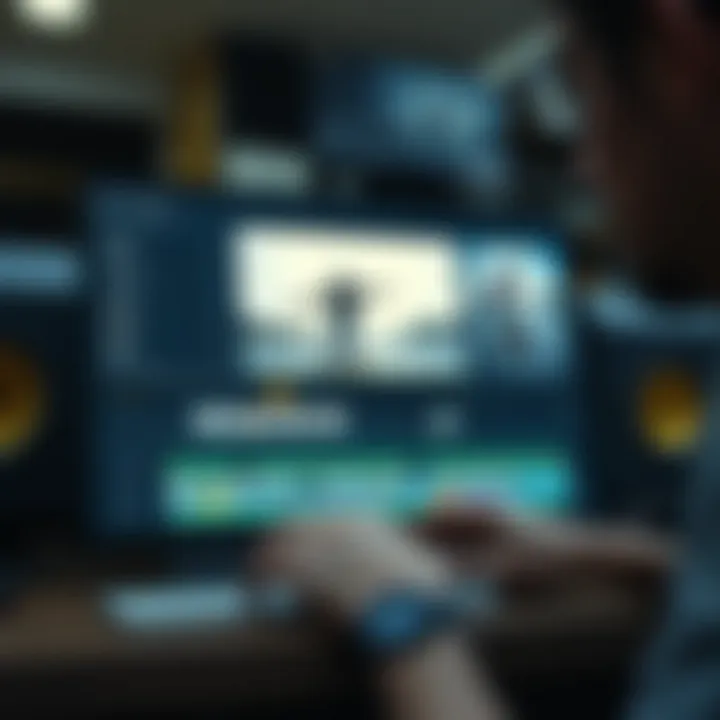
Beginner-Friendly Programs
For those just dipping their toes in the editing waters, beginner-friendly programs like iMovie or DaVinci Resolve can be invaluable. These tools are designed to simplify the editing process while still providing enough features to produce a quality skate edit. A key characteristic of these programs is their user-friendly interface, which typically includes drag-and-drop functionalities and pre-set transitions. This makes them an accessible choice for those who may feel overwhelmed by the more complex software options.
A unique feature of software like iMovie is its ability to easily integrate sound and visual effects. However, they may lack advanced functionalities that experienced editors might require. Despite that, such programs are often supported with generous tutorials and community forums, making the learning curve less daunting. In essence, they equip budding editors with essential skills without overwhelming them with too many choices.
Advanced Editing Suites
On the more sophisticated end of the spectrum, advanced editing suites such as Adobe Premiere Pro or Final Cut Pro offer a robust toolkit for the serious editor. These programs come packed with powerful features that allow for intricate editing, precise color grading, and professional-level audio editing. A significant advantage is the depth of control over each editing element, which lets you craft your edit to perfection.
One unique advantage of these suites is their capacity for multi-layer editing. This allows videographers to work with multiple clips simultaneously and create complex visual effects. However, the downside may be the steep learning curve; it requires time and effort to master the full range of functionalities. Still, for those serious about producing high-quality skate edits, these tools can pay off substantially in the long run.
Editing Techniques
Cutting and Trimming
Cutting and trimming are fundamental skills in video editing that directly influence the flow and pacing of your skate edit. The ability to cut irrelevant sections and precisely trim footage can help maintain viewer interest and ensure that the most captivating moments shine through. One of the hallmarks of effective cutting is the technique known as ‘J-cuts’ and ‘L-cuts’, which help in creating a seamless transition between scenes.
A notable advantage of mastering cutting is that it helps establish rhythm in your edit. By strategically timing your cuts with the music or action, the viewer's engagement stays high. However, if done poorly, excessive cutting can disrupt the narrative and confuse the audience. Thus, developing a keen eye for what to keep and what to discard is crucial.
Color Grading
Color grading is not merely about correcting colors but about adding an emotional layer to your skate edit. By playing with the hue and saturation, videographers can create a mood that complements the video’s narrative. It transforms the footage from a flat image into one that captivates and engages the viewer.
A key characteristic of color grading lies in its ability to evoke feelings. For instance, desaturated colors may convey a sense of nostalgia, while vibrant colors can enhance energy and excitement. Learning to use tools like the Lumetri Color Panel in Adobe Premiere Pro allows for nuanced adjustments that can drastically impact the look of your final edit. Yet, an overzealous application can lead to unnatural results, so a careful hand is necessary.
Transition Effects
In the world of skate edits, transition effects can be a double-edged sword. They can add flair and polish, but if misused, they could be distracting. Common transitions include fades, dissolves, and wipes. Each has its place, but understanding when and how to use them is key to maintaining the flow of your edit.
The beauty of well-executed transitions is that they can enhance storytelling. For example, a quick cutaway transition can create a sense of urgency during a trick, while a fade might be ideal for ending a segment on a reflective note. That said, excessive use can lead to viewer fatigue. Finding a balance will make your cut feel seamless and professional, ensuring that transitions complement rather than detract from the story.
Effective editing is not just about what you see; it's about what you feel.
In sum, mastering the art of editing can significantly elevate your skate edits. Each of the mentioned techniques offers a way to fine-tune your project, making sure it not only looks good but tells a story that resonates with your audience.
Incorporating Sound Design
Incorporating sound design into skate edits is not just a footnote; it’s a vital thread that weaves the visual narrative together. The impact of sound can elevate a simple video to an engaging storytelling experience. When combined with visuals, sound creates an emotional backdrop that enhances viewer engagement. The right audio choices can amplify the adrenaline rush or calmness that the skateboarding experience offers, tailoring the vibe to fit the aesthetic and message you want to convey.
Consider the atmosphere of the skate scene you are capturing. Is it high-energy, filled with fast-paced tricks, or is it more relaxed, showcasing a community hangout? The sound design must harmonize with these visual cues, allowing viewers to feel not just see the ride.
Choosing Background Music
Music is arguably the backbone of sound design in skate edits. The composition you choose serves not only as a backdrop but can also inform the pace and mood of the entire piece.
Royalty-Free Options
When it comes to Royalty-Free music, many skaters find it to be an appealing route because it allows for creative freedom without the headache of legal complexities. The key characteristic of this kind of music is that it generally requires a one-time payment or sometimes none at all, making it accessible for those on a budget.
Choosing Royalty-Free tracks ensures you won’t face copyright claims or financial repercussions that could arise from using mainstream tracks. There are numerous platforms that offer a plethora of Royalty-Free options, like Epidemic Sound and Artlist.
However, while the ease of use is a big plus, there’s a downside too; sometimes the music can feel generic or overused, lacking the unique punch of a well-known track that might resonate with the audience. As a skater creating content, balancing originality with accessibility is essential.
Licensing Music
Licensing your music is a different game altogether. This route involves securing the rights to use popular songs, perhaps those that connect deeply with viewers or convey a strong emotional punch that Royalty-Free options might not provide. The game-changer here is that licensed music lends your skate edits credibility and a more polished feel.
The big advantage is its wide recognition and potential to resonate with a younger audience familiar with the tracks. However, the licensing process can be complex and often costly, particularly for independent creators or amateurs. Finding a track that perfectly encapsulates your edit might be a challenge too; that said, the payoff in terms of viewer engagement can be worth it.
Adding Sound Effects
Sound effects are an often-overlooked but crucial element of sound design in skate edits. Think about the sound of gravel crunching beneath the skate wheels, the wind whooshing by as the skater picks up speed, or the skids and thuds when tricks are landed—these sounds provide texture and realism to your edit.
Reinforcing visuals with authentic sound effects draws the audience into the moment. Additionally, combining sound effects with background music can enhance the narrative arc of your skate edit. By layering these elements effectively, you can create a rich auditory experience that sparks the viewer’s imagination and heightens their engagement.
Ultimately, paying close attention to sound design, whether it be choosing the right background music, licensing choices, or adding relevant sound effects, makes all the difference between a mundane skate edit and one that resonates deeply with its audience.
Finalizing and Exporting
Finalizing and exporting your skate edit is a crucial phase in the entire creation process. It’s not just about hitting the 'save' button and calling it a day. This step involves meticulous review and careful selection of settings that ensure your hard work shines when shared with the world. The importance of this phase cannot be overstated, as it directly affects the quality and reception of your edit.
Reviewing Your Edit
Before you send your skate edit out into the wild, it's essential to give it a thorough review. Often, creators can become a bit too attached to their work and might overlook some minor details that could use polishing. Here are some key aspects to focus on during your review:
- Flow and Pacing: Ensure that the edit flows smoothly. Watch it multiple times, and make note of any awkward transitions or sections that drag on too long. A well-paced edit keeps the audience engaged and mirrors the rhythm of the skateboarding itself.
- Consistency in Style: As you review, pay close attention to visual and audio styles. Your edit should feel cohesive, maintaining a similar vibe throughout. This encompasses everything from color grading to the choices in music or sound effects.
- Technical Issues: Look out for any errors or artifacts in the footage. Blurriness, shaky cuts, or sync issues can detract from the professionalism of your edit. Address these before exporting to save yourself from potential embarrassment later on.
Take the time needed for this step, as it’s better to identify and correct any issues now than to realize them after sharing your work.
Export Settings
Choosing the right export settings is crucial for ensuring your skate edit looks good across various platforms, and it can significantly affect overall viewer experience. Below, we break down some details that can guide you through this process.
Optimal Formats for Platforms
When it comes to sharing your skate edit, understanding the right format for each platform can make all the difference. Key characteristics of optimal formats include efficiency in compression and high-quality output.
- H.264/MPEG-4 AVC: This format is often recommended for web uploading as it offers a great balance between file size and quality. It’s widely supported across platforms like YouTube and Facebook, making it a popular choice.
- 720p vs. 1080p: While 720p might suffice for some platforms and lower bandwidth situations, 1080p delivers a crisper image that stands out, particularly on larger screens. However, larger file sizes can slow down upload speeds.
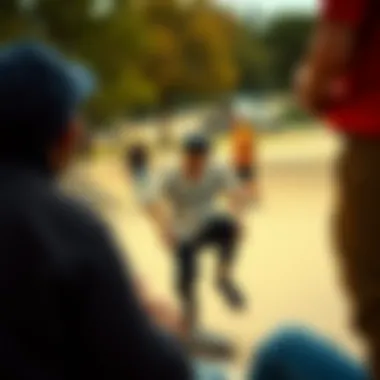
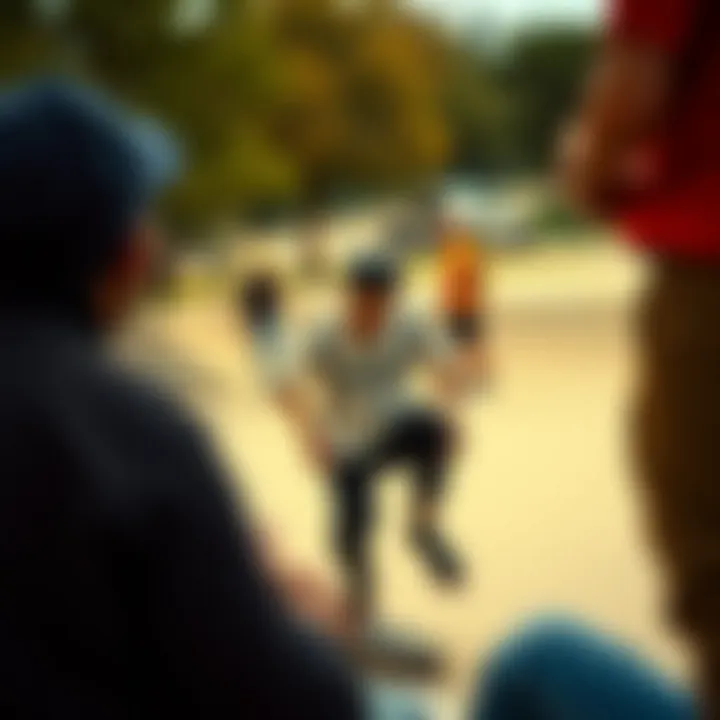
A unique feature of these formats is their ability to compress data without greatly affecting visual fidelity, ensuring skaters and enthusiasts see the full essence of the action-packed sequences.
Quality Considerations
Quality is paramount. A well-edited skate video might fall flat if the quality isn’t up to par when presented to your audience. Here are some quality factors that are vital:
- Bitrate Settings: The bitrate determines how much data is used for each second of video. A higher bitrate means better quality but larger file size. Balancing these aspects is essential for online sharing, where speed can influence viewership.
- Resolution: Higher-resolution exports (like 4K) offer an incredible viewing experience, although they require more storage and processing power. Assess your target platform and audience to make the best choice here.
In deciding on the quality settings, consider the target audience—are they likely to watch on mobile devices or bigger screens? Tailoring your output based on how and where viewers will see your work can enhance engagement.
Remember, taking the time to finalize and export your edit judiciously will pay off in the long run, resulting in more views, shares, and respect within the community.
Sharing Your Skate Edit
Sharing your skate edit is a pivotal step in the filmmaking journey. It's not just about submitting a final product but also about connecting with the skateboarding community and showcasing your unique style. In the digital age, sharing has many facets. The platforms you choose and the strategies you employ can significantly impact how your edit is perceived and received. This section delves into the nuances of effectively sharing your work, considering platform selection and promotion strategies.
Choosing the Right Platform
Social Media
Social media is often the go-to place for skaters when it comes to sharing edits. It provides a fast-paced avenue for reaching a vast audience. The key characteristic of social media is its immediacy; once you post, it can be seen by thousands in just a click.
Platforms like Instagram, TikTok, and Facebook are popular choices among skaters due to their visual-centric nature and ability to engage viewers quickly. Instagram, for instance, is well-loved for its story feature and reels, which allow for short, dynamic clips that can highlight the best moments of your skate edit.
One major advantage is the community aspect, where you can interact with comments and messages, thus fostering a sense of connection. However, the downside can be the fleeting nature of posts, which may get buried under a constant stream of content. Skaters must be savvy to consistently push their limits to stand out in the crowd.
Video Hosting Sites
On the other hand, video hosting sites like YouTube or Vimeo offer a different set of advantages. These platforms are tailored for long-form content, allowing you to share your full edit without the restrictions of time limits. The benefit here is the opportunity for more in-depth storytelling and creativity in your edits.
A unique feature of sites like YouTube is the ability to monetize your content, provided you meet their requirements. This can turn sharing your skate edits into a potential source of income. However, these platforms can be harder to promote initially, as building a subscriber base takes time and consistent quality uploads.
Effective Promotion Strategies
Engaging with the Community
Engaging with the community forms the backbone of promoting your skate edit. It's not just about posting and forgetting it. Instead, actively participating in forums, Discord servers, and skateboarding groups helps spread the word about your work. When you share your art, you also want to be part of discussions, provide feedback, and support others. The character of this engagement stems from the shared passion for skating, making it a powerful tool.
Unique to this approach is the authenticity it cultivates. As you build genuine connections with viewers and fellow skaters, you're likely to see more shares and interactions on your own edits. However, there's a caveat; it can be time-consuming to manage interactions and create a balance between engaging and creating new content.
Utilizing Hashtags and Tags
Utilizing hashtags and tags is another key promotion strategy in the sharing process. These are crucial for visibility, as they allow your edit to be discoverable by anyone searching for related content. The specificity of hashtags can draw in a targeted audience who are genuinely interested in skateboarding.
For example, using tags like #SkateboardingVideos or #SkateEdit helps align your work with current trends and visibility. This method gives you the advantage of being included in broader conversations. However, overusing irrelevant tags can dilute your brand and confuse audiences about the content you create.
"In the world of skateboarding, sharing isn’t just about visibility; it’s about building community through authentic engagement and creative expression."
Properly leveraging both community engagement and strategic tagging can enhance the likelihood of viewers not only watching your content but also returning for future edits. These strategies create a thriving environment where your unique style and perspective shine through, ultimately enriching the skateboarding culture and expanding your reach.
Analyzing the Response
Analyzing the response to your skate edit is key in connecting with viewers, honing your skills, and fostering growth within the skateboarding community. The feedback you receive serves as a compass, guiding you in understanding how your work resonates with your audience. Reviews are not just numbers or likes; they're a reflection of your storytelling and creativity. Ignoring feedback can lead to missed opportunities for improvement. Therefore, diving into viewer responses gives you valuable insights on what resonates and what may fall flat.
Understanding Viewer Feedback
Viewer feedback comes in many forms, and understanding it requires not just looking at the surface. It’s about grasping the essence of what the viewers are saying, whether through comments, shares, or direct messages. Here are a few points to ponder when analyzing this feedback:
- Engagement Metrics: Likes, shares, and comments give a quantitative measure of how your edit is performing. High engagement often indicates that your edit struck a chord.
- Qualitative Comments: Pay attention to people’s comments. Are they praising a specific trick? Do they want to see more of a certain location? These insights are priceless.
- Viewer Demographics: Understanding who watches your edits can inform your future content. Are your viewers primarily from big cities or smaller towns? This may dictate the themes you explore.
Incorporating this feedback into your subsequent projects can lead to improved content. The skateboarding community thrives on authenticity and originality—it’s essential to listen and adapt accordingly.
Iterating on Future Edits
Iterating on future edits based on viewer feedback creates a cyclical improvement process that can elevate your videography. It’s the practice of refining your content by applying insights gained from previous works. This approach doesn’t merely mean making changes based on what viewers prefer; it’s about understanding the bigger picture. Here’s how you can iterate effectively:
- Data-Driven Improvements: Use specific viewer feedback to adjust your filming and editing techniques. For instance, if multiple viewers mention poor lighting in a certain scene, invest time in learning new lighting setups or post-production adjustments.
- Content Evolution: Look into developing themes or concepts that received positive responses. If the skate edits showcasing new tricks or unique terrains garnered more attention, focus on expanding these aspects.
- Experimentation: Don’t shy away from testing new styles or techniques. Some viewers appreciate experimentation, and it could lead to unexpected popularity. Take calculated risks, keeping in mind past feedback.
In summary, consistently analyzing viewer feedback and iterating on your edits fosters a growth mindset. It transforms every skate edit into a learning experience, ensuring that your creative expression continues to evolve along with your audience's preferences. This cycle of improvement can ultimately solidify your position within the skateboarding community, making your content more relevant and engaging.
"Every critique is a chance to refine your art and create something that appeals even more."
For more insights on effective engagement strategies and community building within skateboarding, you can check out resources on Reddit, or engage with the community on Facebook. Also, exploring filmmaking techniques on Wikipedia can provide further depth.
Epilogue
In the realm of skate editing, concluding one’s journey through the various stages of production is just as essential as beginning it. The Conclusion serves multiple purposes: it ties together all the threads of thought and technique that make for compelling skate edits. As viewers engage with your video, they'll appreciate your ability to not just showcase tricks but to tell a story that resonates with them. This stage is about reflection and evaluation, both for the creator and the audience.
- Recapping key elements: A strong conclusion reiterates vital techniques, scene selections, and editing techniques discussed, reminding viewers of how each aspect contributes to the final product. Effectively wrapping up your edit with a summary can enhance the viewer’s understanding and enjoyment.
- Benefits of reflection: Taking a moment to review what has been learned can influence future edits significantly. Every skate edit offers an opportunity for the creator to analyze successes and setbacks, making for a more refined approach in the next installment of their filmmaking journey.
- Considerations on growth: The culmination of every skate edit should not just mark the end but also signal a pathway toward improvement. Continue to push the boundaries of your creative limits, experiment with different styles, and keep an open mind toward feedback.
As skaters continually strive to improve their technique and style, those behind the camera should likewise embrace a growth mindset in their filmmaking endeavors.
Recap of Key Points
To encapsulate the crux of this article, here’s a recap of our journey:
- Understanding Skate Edits: Recognizing the essence behind cool edits and focusing on individual expression is paramount.
- Conceptualizing: A theme or narrative is essential to binding your footage in a meaningful way.
- Planning and shooting: Careful shot selection and innovative filming techniques can elevate your content immensely.
- Editing dynamics: Whether it’s choosing software or applying specific editing techniques, these skills are crucial for seamless storytelling.
- Sound integration: Quality sound choice and effects enrich the atmosphere of your skate edit, giving it depth.
- Sharing and analysis: Finally, selecting the right platform for sharing your work connects you to the community, while analyzing feedback helps refine your craft for future edits.
Encouraging Personal Growth in Filmmaking
Personal growth is the unsung hero of the filmmaking journey. While technical skills in skate editing certainly help produce great content, it's the evolution of one’s personal style that often leaves a lasting impact on the audience. Here are a few takeaways:
- Embrace feedback: Engaging openly with your viewers fosters a learning environment—not just for you, but for them as well. Feedback isn’t criticism; it’s a stepping stone.
- Experimentation is key: Don’t be afraid to step outside your comfort zone. Whether it's a new filming technique or a different editing style, pushing boundaries can lead to groundbreaking results.
- Watch and learn: Analyze other filmmakers. What works for them? What doesn't? This knowledge can be applied to enrich your own creative process.
- Create to express: Always remember, the most important aspect of skate editing is to maintain authenticity. Your love for skating and creating should be at the heart of every edit you produce.
Remember, every edit you craft is a step closer to refining your art. Embrace the journey and keep pushing the envelope in skate filmmaking.



